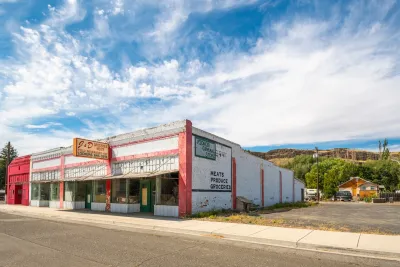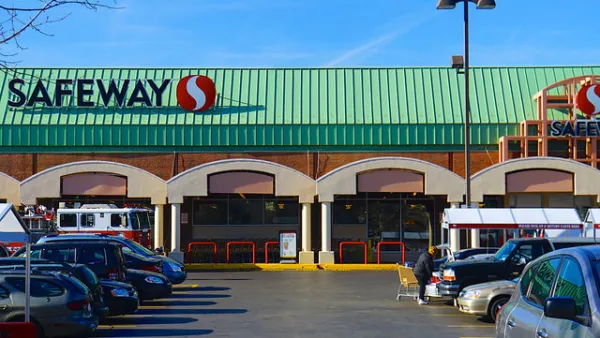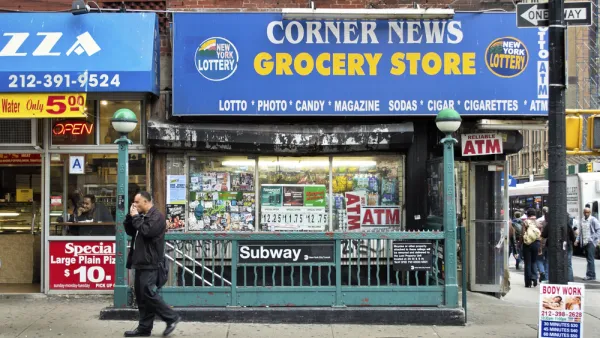How enforcing one federal law, ignored since the 1980s, could bring back small grocers and ensure more people have convenient access to fresh foods.

In a piece for The Atlantic, Stacy Mitchell explains the rise of “food deserts” — communities with limited or non-existent access to fresh food options — in the late 1980s as a result of a federal policy change.
“Food deserts are not an inevitable consequence of poverty or low population density, and they didn’t materialize around the country for no reason,” Mitchell writes. They occurred because the Reagan administration stopped enforcing the 1936 Robinson-Patman Act, allowing large grocery retailers to strong-arm suppliers and centralize their national purchasing power, pricing small retailers out of the market.
This led to a “massive die-off” of independent stores, Mitchell explains, and not just in the grocery sector: “From 1982 to 2017, the market share of independent retailers shrank from 53 percent to 22 percent.”
For Mitchell, “If you were to plot the end of Robinson-Patman enforcement and the subsequent restructuring of the retail industry on a timeline, it would closely parallel the emergence and spread of food deserts.” Small stores couldn’t keep up with product prices, and their customers couldn’t afford to pay more. “But once the independent stores closed, the chains no longer had to invest in low-income areas. They could count on people to schlep across town to their other locations.”
Mitchell asserts that enforcing the Robinson-Patman Act again is the key to eliminating food deserts and ensuring that all Americans have convenient access to fresh foods in their communities.
FULL STORY: The Great Grocery Squeeze

National Parks Layoffs Will Cause Communities to Lose Billions
Thousands of essential park workers were laid off this week, just before the busy spring break season.

Retro-silient?: America’s First “Eco-burb,” The Woodlands Turns 50
A master-planned community north of Houston offers lessons on green infrastructure and resilient design, but falls short of its founder’s lofty affordability and walkability goals.

Delivering for America Plan Will Downgrade Mail Service in at Least 49.5 Percent of Zip Codes
Republican and Democrat lawmakers criticize the plan for its disproportionate negative impact on rural communities.

Test News Post 1
This is a summary

Test News Headline 46
Test for the image on the front page.

Balancing Bombs and Butterflies: How the National Guard Protects a Rare Species
The National Guard at Fort Indiantown Gap uses GIS technology and land management strategies to balance military training with conservation efforts, ensuring the survival of the rare eastern regal fritillary butterfly.
Urban Design for Planners 1: Software Tools
This six-course series explores essential urban design concepts using open source software and equips planners with the tools they need to participate fully in the urban design process.
Planning for Universal Design
Learn the tools for implementing Universal Design in planning regulations.
EMC Planning Group, Inc.
Planetizen
Planetizen
Mpact (formerly Rail~Volution)
Great Falls Development Authority, Inc.
HUDs Office of Policy Development and Research
NYU Wagner Graduate School of Public Service





























